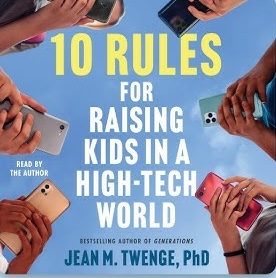
Research into Growth Mindsets often focuses on small groups of people: a class or two of 5th graders, a few dozen college students.
These studies allow researchers to draw conclusions about this specific group of students. However, we’re less sure about the sub-populations.
How does Mindset influence English Language Learners? Female students? Students from different social strata?
A recent report from the Brookings Institute answers these questions with data from several school districts in California. Believe it or not, this report includes responses from 125,000 students in 4th through 7th grades.
125,000 is, obviously, a staggeringly large number of participants. As a result, researchers can look at subgroups and still have very large samples.
What did they conclude?
Mind the gaps
In the first place, group membership matters for Mindset.
In all four grades, African American and Hispanic students had lower Growth Mindset scores than their white peers. (Asian American students did too, but the differences were smaller.)
In all four grades, students from lower socio-economic strata also had lower GM scores. (As is common, researchers determined social strata by looking at students who are eligible for free- or reduced-price lunches.)
And, ELL students were also more prone to a Fixed Mindset.
Contrary to other studies, this one finds that girls in 4th-6th grade have slightly higher GM scores than boys. There were no meaningful differences in 7th grade.
Growth Mindsets help subgroups learn
These group differences matter only if mindset matters. If Fixed and Growth Mindset students learn equally well, then we don’t need to worry about this variable.
Very consistently, researchers Susana Loeb and Susanna Claro found that mindsets matter for learning. Across the board, students with a Growth Mindset made more academic progress than those with a Fixed Mindset.
They made more progress in math and in English language arts.
Again, this finding held for the subgroups they studied. Special education students and non-special education students; boys and girls; ELL students and non-ELL students: all of them learned more if they had a Growth Mindset.
How much more? MUCH more…
Measuring this additional learning can be quite a challenge. It is, of course, possible, that Growth Mindset students learned more…but not enough more to matter.
In this case, according to Loeb and Claro’s calculations, the learned A LOT more. It was as if they got an additional 19 days of school.
In other words, a Growth Mindset gives students an extra month of classes.
Miraculously, this additional learning doesn’t take any more time, and doesn’t cost any more money. Simply by changing their beliefs, students buy themselves four weeks of knowledge and skill.
By the way, these additional days might be available to most of the students in these grades. A different set of calculations concludes that 75% of the 4th-7th grades could substantially improve their mindset score.
Explaining the differences
Loeb and Claro conclude with a somber but intriguing suggestion. They wonder if some students — particularly those lower social strata — might have a Fixed Mindset because of their social circumstances.
That is: they might reasonably think it’s harder for them to learn because of their family’s economic plight. Hunger really does make learning more challenging.
Despite this sobering note, this impressive research project gives us reason to believe that a Growth Mindset can help many–although not all–of our students learn more every year in school.






